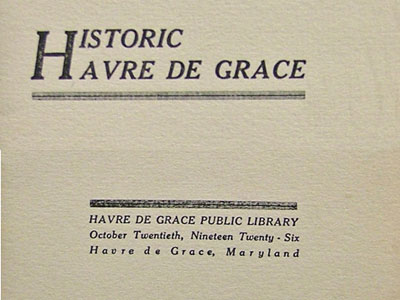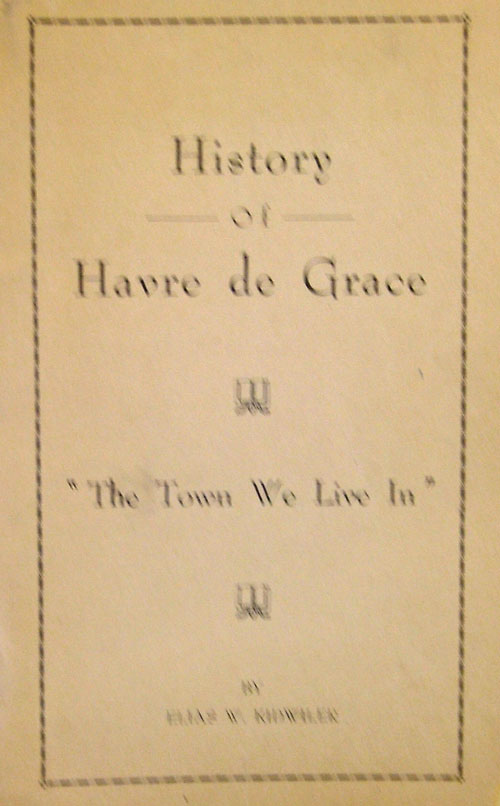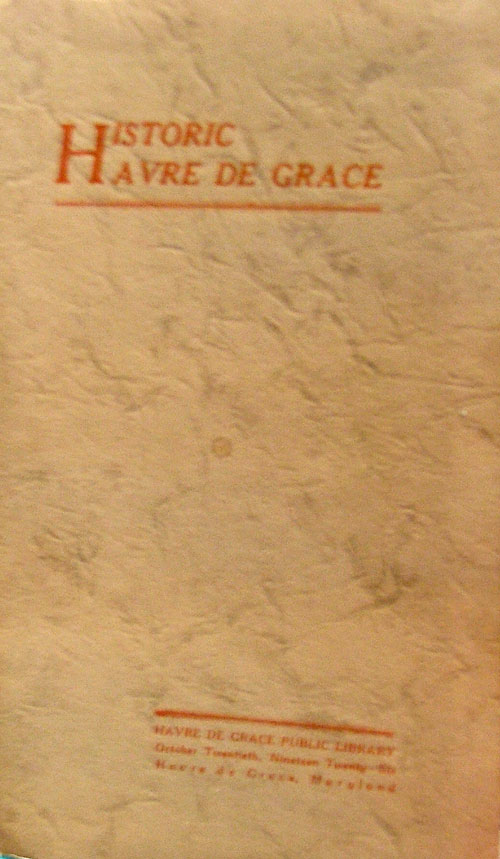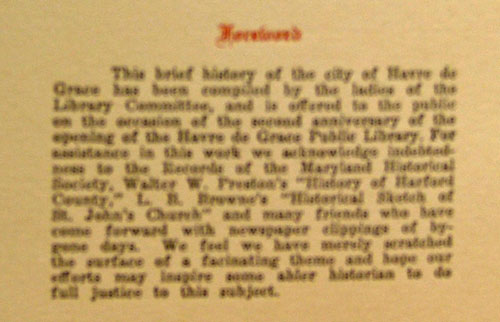Kidwiler and Havre de Grace Public Library
In Stanley M. Barrett and Elias W. Kidwiler’s book, History of Havre de Grace – “The Town We Live In”, we learn of Palmer’s Island, later known as Watson’s Island, and now know as Garrett’s Island. … Then we read of Harmers Town, sold to Stockett, “after 1700 it was known officially as “The Susquehanna Lower Ferry.” In 1714 it again changed hands (ownership) to John Stokes. According to Kidwiler’s writings, In 1785 the Susquehanna Lower Ferry was incorporated as a town with a commission form of government and was officially given its present name (Havre de Grace).
Havre de Grace, from the date of its incorporation as a town, continued to grow steadily in population and wealth. Fishing was the source of income for many of its citizens. The inns and hotels required the services of a considerable number of people. During the long, hard winters when the river froze to a depth of eighteen inches or more, many men were engaged in cutting, storing and shipping ice. There were services necessary for the farmers who made Havre de Grace their shopping center – blacksmith shops, wagon factories and repair shops, feed stores, general stores and hardware stores. Canneries were built in the city and provided an outlet for more corn and tomatoes than the farmers had been formerly disposing of, and took a considerable portion of the local fishermen’s catch. The coming of the railroad meant employment for both skilled and unskilled labor.
Again – apologies for the blur… We have duplicates of some of the historic items in the store; many we do not. Stop in and see these for yourself. Interesting perspectives of our community over the years.
The ‘foreword’ inside the Historic Havre de Grace booklet, published by the Havre de Grace Public Library in 1926 reads as follows:
This brief history of the city of Havre de Grace has been compiled by the ladies of the Library Committee, and is offered to the public on the occasion of the second anniversary of the opening of the Havre de Grace Public Library. For assistance in this work we acknowledge indebtedness to the Records of the Maryland Historical Society, Walter W. Preston’s “History of Harford County,” L. B. Browne’s “Historical Sketch of St. John’s Church” and many friends who have come forward with newspaper clippings of bygone days. We feel we have merely scratched the surface of a fascinating theme and hope our efforts may inspire some abler historian to do full justice to this subject.
The conclusion in the Public Library’s 1926 publication is a wonderful tribute to a city’s growth. It follows:
We have endeavored to picture for you the growth and development of our city from its early beginning. First, a family or two, then, a cluster of houses sheltering an intrepid band which decided to seek no further. A few survived the early hardships, and the call of kindred inspired others to come. What makes a city grow? Is it not the spirit of its people, their desire to make their surroundings safe and attractive and the measure of their neighborly kindness which influences others to join with them for mutual welfare? A man is not attracted to a town where his best efforts will bring him no reward and his friendly advances are repulsed. The spirit of enterprise and brotherly helpfulness is the great wellspring of a city’s progress, and this spirit in an increased measure is our desire for Havre de Grace.
There is much wisdom for us in the 21st century from the perspective presented in these books and pamplets of yesteryear!







